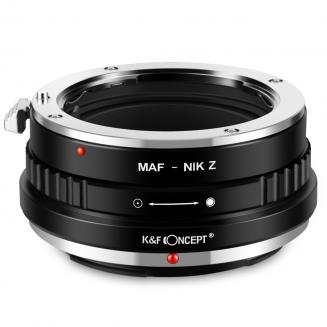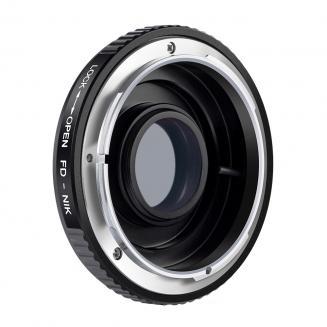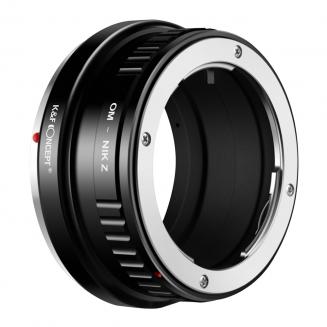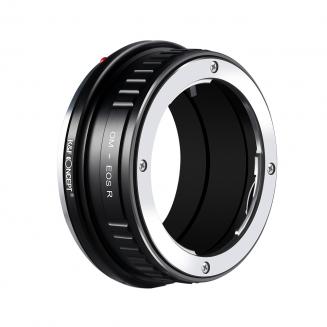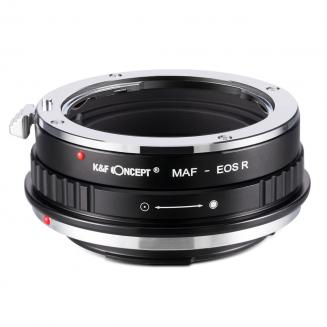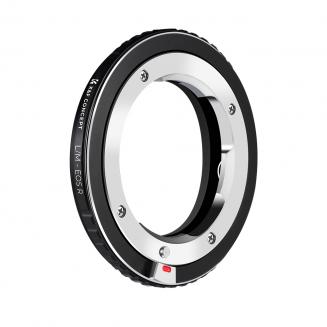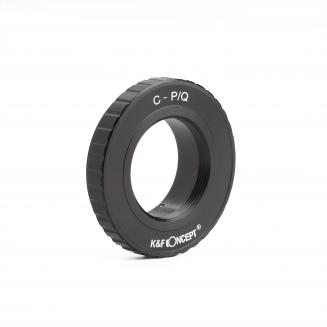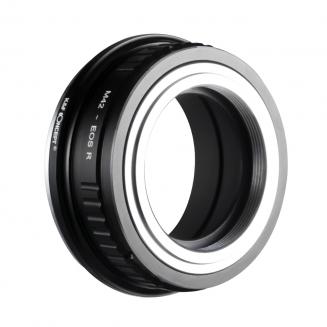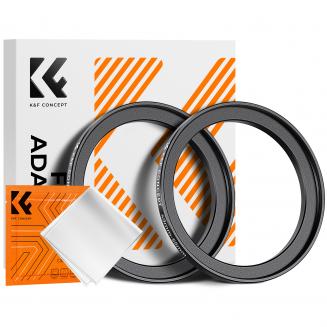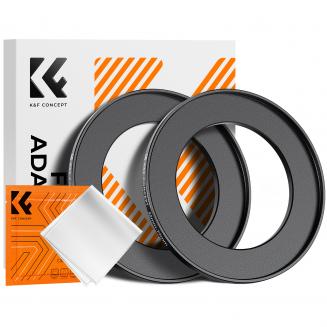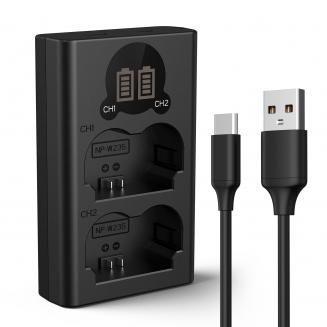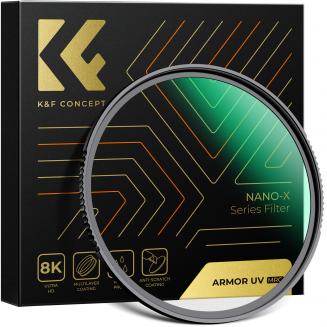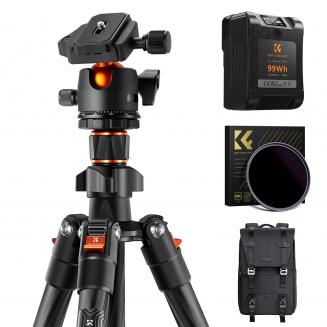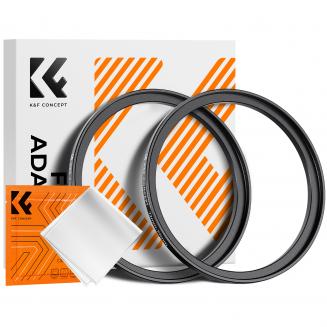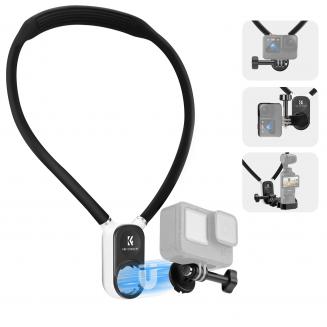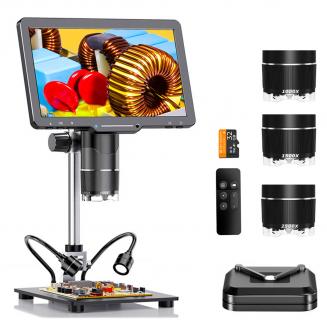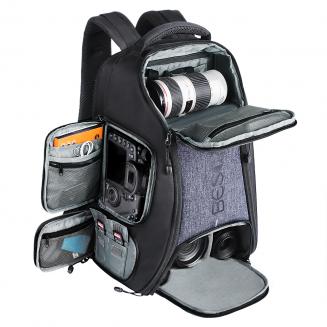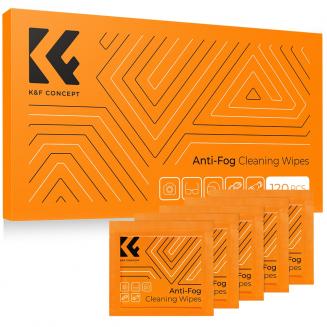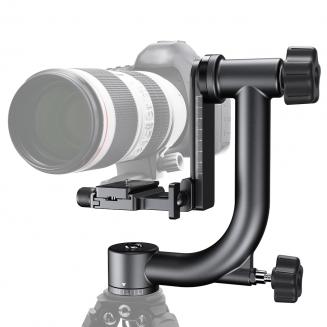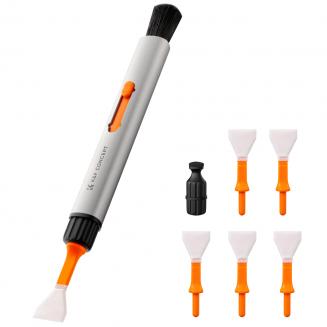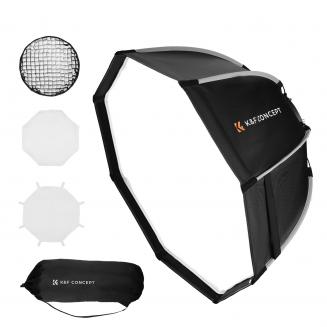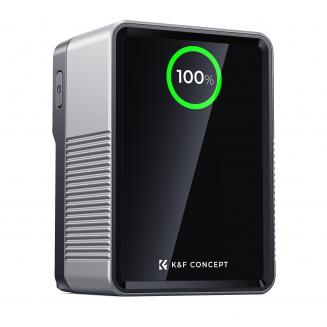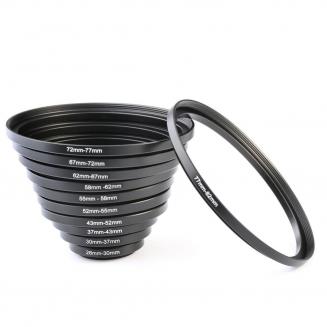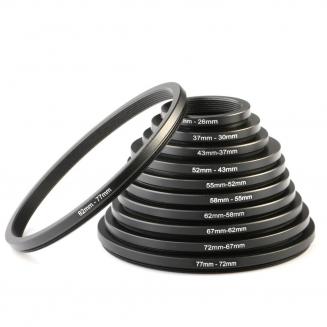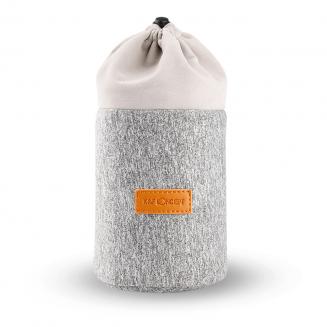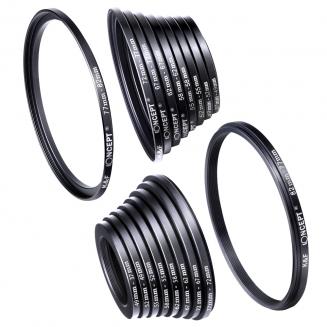
Manual focus
Infinity focus
Copper construction
Precise alignment
Red dot
Easy installation
Lens compatibility
Cost-saving
High quality
Compact design
-Smooth surface for effortless mount, Made of copper.
-This adapter fits Minolta/Sony AF A mount lens to Nikon Z6 Z7 mount camera body.
-Full manual operation, manual focus, infinity focus allowed.
-Red dot identification, precise alignment, easy to install and disassemble.
-If your camera indicated "lens is not properly installed", please modify the camera menu settings. Usually called the release the shutter the lens is not installed", you can modify the settings to allow. Specifically refer to the camera manual.
-This adapter fits Minolta/Sony AF A mount lens to Nikon Z6 Z7 mount camera body.
-Full manual operation, manual focus, infinity focus allowed.
-Red dot identification, precise alignment, easy to install and disassemble.
-If your camera indicated "lens is not properly installed", please modify the camera menu settings. Usually called the release the shutter the lens is not installed", you can modify the settings to allow. Specifically refer to the camera manual.
Original Price
$93.99
Discounted Price
$48.99
Total Save
$45.00
Lens compatibility
Durable construction
Manual operation
Infinity focus
Brass-aluminum build
Wide camera support
Telephoto bracket
Tripod compatibility
Satisfaction assurance
Quality guarantee
-Allow Canon FD mount lenses used on Nikon DSLR camera body.
-Compatible with Nikon camera includes: Nikon D3000, D300s, D3100, D3200, D3300, D3400, D3s, D3x, D4, D400, D4s, D5, D500, D5000, D5100, D5200, D5300, D5500, D5600, D5s, D6, D600, D610, D700, D7000, D7100, D7200, D750, D7500, D760, D800, D810, D810a, D850, D90 etc.
-Made of brass and aluminum. Stable,precise and durable construction.Manually operated.Infinity focus allowed.
-For heavy medium format lenses, we suggest to use with a telephoto bracket and a tripod to balance its weight when shoot.
-30 Days No Reason Return,12 months quality guarantee,100% satisfaction assurance.
-Compatible with Nikon camera includes: Nikon D3000, D300s, D3100, D3200, D3300, D3400, D3s, D3x, D4, D400, D4s, D5, D500, D5000, D5100, D5200, D5300, D5500, D5600, D5s, D6, D600, D610, D700, D7000, D7100, D7200, D750, D7500, D760, D800, D810, D810a, D850, D90 etc.
-Made of brass and aluminum. Stable,precise and durable construction.Manually operated.Infinity focus allowed.
-For heavy medium format lenses, we suggest to use with a telephoto bracket and a tripod to balance its weight when shoot.
-30 Days No Reason Return,12 months quality guarantee,100% satisfaction assurance.
Original Price
$32.99
Discounted Price
$32.99
Total Save
$0.00
Olympus OM
Nikon Z6 Z7
Smooth surface
Copper material
Manual operation
Manual focus
Infinity focus
Red dot
Precise alignment
Easy installation
-Smooth surface for effortless mount, Made of copper.
-This adapter allows you to use the Olympus OM lens to Nikon Z6 Z7 mount camera body.
-Full manual operation, manual focus, infinity focus allowed.
-Red dot identification, precise alignment, easy to install and disassemble.
-If your camera indicated "lens is not properly installed", please modify the camera menu settings. Usually called the release the shutter the lens is not installed", you can modify the settings to allow. Specifically refer to the camera manual.
-This adapter allows you to use the Olympus OM lens to Nikon Z6 Z7 mount camera body.
-Full manual operation, manual focus, infinity focus allowed.
-Red dot identification, precise alignment, easy to install and disassemble.
-If your camera indicated "lens is not properly installed", please modify the camera menu settings. Usually called the release the shutter the lens is not installed", you can modify the settings to allow. Specifically refer to the camera manual.
Original Price
$87.99
Discounted Price
$45.99
Total Save
$42.00
Lens compatibility
Canon EOS R
Stable construction
Precise build
Infinity focus
Manual operation
Durable materials
Quality guarantee
Lightweight balance
Full range
-Allow Olympus OM lenses used on Canon EOS R mount camera body.
-Compatible with Canon EOS R mount series mirrorless camera.
-Made of brass and aluminum. Stable, precise and durable construction. Manually operated. Infinity focus allowed.
-For heavy medium format lenses, we suggest to use with a telephoto bracket and a tripod to balance its weight when shoot.
-30 days no reason return, 12 months quality guarantee, 100% satisfaction assurance.
-Compatible with Canon EOS R mount series mirrorless camera.
-Made of brass and aluminum. Stable, precise and durable construction. Manually operated. Infinity focus allowed.
-For heavy medium format lenses, we suggest to use with a telephoto bracket and a tripod to balance its weight when shoot.
-30 days no reason return, 12 months quality guarantee, 100% satisfaction assurance.
Original Price
$87.99
Discounted Price
$45.99
Total Save
$42.00
Lens compatibility
Infinity focus
Durable construction
Manually operated
Brass-aluminum build
Quality guarantee
30-day return
Telephoto support
Mirrorless compatible
Wide adaptability
-Allow Minolta A / Sony A lenses used on Canon EOS R mount camera body.
-Compatible with Canon EOS R mount series mirrorless camera.
-Made of brass and aluminum. Stable, precise and durable construction. Manually operated. Infinity focus allowed.
-For heavy medium format lenses, we suggest to use with a telephoto bracket and a tripod to balance its weight when shoot.
-30 days no reason return, 12 months quality guarantee, 100% satisfaction assurance.
-Compatible with Canon EOS R mount series mirrorless camera.
-Made of brass and aluminum. Stable, precise and durable construction. Manually operated. Infinity focus allowed.
-For heavy medium format lenses, we suggest to use with a telephoto bracket and a tripod to balance its weight when shoot.
-30 days no reason return, 12 months quality guarantee, 100% satisfaction assurance.
Original Price
$93.99
Discounted Price
$48.99
Total Save
$45.00
Leica compatibility
Canon EOS R
Durable construction
Infinity focus
Manual operation
Medium format
Telephoto support
Tripod balance
12-month guarantee
Full range
-Allow Leica M lenses used on Canon EOS R mount camera body.
-Compatible with Canon EOS R mount series mirrorless camera.
-Made of brass and aluminum. Stable, precise and durable construction. Manually operated. Infinity focus allowed.
-For heavy medium format lenses, we suggest to use with a telephoto bracket and a tripod to balance its weight when shoot.
-30 days no reason return, 12 months quality guarantee, 100% satisfaction assurance.
-Compatible with Canon EOS R mount series mirrorless camera.
-Made of brass and aluminum. Stable, precise and durable construction. Manually operated. Infinity focus allowed.
-For heavy medium format lenses, we suggest to use with a telephoto bracket and a tripod to balance its weight when shoot.
-30 days no reason return, 12 months quality guarantee, 100% satisfaction assurance.
Original Price
$87.99
Discounted Price
$45.99
Total Save
$42.00
D mount
Pentax Q
Durable construction
Infinity focus
Manual operation
Wide compatibility
Brass aluminum
Weight balance
Quality guarantee
Satisfaction assurance
-Allow D mount lenses used on Pentax Q camera body.
-Compatible with Pentax Q camera includes: Pentax Q, Q10, Q7, Q-S1 etc.
-Made of brass and aluminum. Stable, precise and durable construction. Manually operated. Infinity focus allowed.
-For heavy medium format lenses, we suggest to use with a telephoto bracket and a tripod to balance its weight when shoot.
-30 Days No Reason Return, 12 months quality guarantee, 100% satisfaction assurance.
-Compatible with Pentax Q camera includes: Pentax Q, Q10, Q7, Q-S1 etc.
-Made of brass and aluminum. Stable, precise and durable construction. Manually operated. Infinity focus allowed.
-For heavy medium format lenses, we suggest to use with a telephoto bracket and a tripod to balance its weight when shoot.
-30 Days No Reason Return, 12 months quality guarantee, 100% satisfaction assurance.
Original Price
$42.99
Discounted Price
$29.99
Total Save
$13.00
C mount
Pentax Q
Durable construction
Infinity focus
Manual operation
Brass aluminum
Telephoto bracket
Tripod support
Quality guarantee
Full compatibility
-Allow C mount lenses used on Pentax Q camera body.
-Compatible with Pentax Q camera includes: Pentax Q, Q10, Q7, Q-S1 etc.
-Made of brass and aluminum. Stable, precise and durable construction. Manually operated. Infinity focus allowed.
-For heavy medium format lenses, we suggest to use with a telephoto bracket and a tripod to balance its weight when shoot.
-30 Days No Reason Return, 12 months quality guarantee, 100% satisfaction assurance.
-Compatible with Pentax Q camera includes: Pentax Q, Q10, Q7, Q-S1 etc.
-Made of brass and aluminum. Stable, precise and durable construction. Manually operated. Infinity focus allowed.
-For heavy medium format lenses, we suggest to use with a telephoto bracket and a tripod to balance its weight when shoot.
-30 Days No Reason Return, 12 months quality guarantee, 100% satisfaction assurance.
Original Price
$29.99
Discounted Price
$29.99
Total Save
$0.00
Lens compatibility
Infinity focus
Durable construction
Stable design
Precision build
Tripod support
Manual operation
Hasselblad compatibility
Sony E mount
Quality guarantee
-Allow Hasselblad V mount lenses used on Sony E NEX/Alpha camera body.
-Compatible with Sony E NEX/Alpha camera includes: Sony NEX-3, NEX-3C, NEX-3N, NEX-5, NEX-5C, NEX-5N, NEX-5R, NEX-5T, NEX-6, NEX-7, NEX-C3, NEX-F3, NEX-VG10, a7, a7R, a9, a3000, a3500, a5000, a5100, a6000, a6300, a6500, a7S, a7 II, a7S II, a7R II, a7R III etc.
-Made of brass and aluminum. Stable,precise and durable construction.Manually operated.Infinity focus allowed.
-For heavy medium format lenses, we suggest to use with a telephoto bracket and a tripod to balance its weight when shoot.
-30 Days No Reason Return,12 months quality guarantee,100% satisfaction assurance.
-Compatible with Sony E NEX/Alpha camera includes: Sony NEX-3, NEX-3C, NEX-3N, NEX-5, NEX-5C, NEX-5N, NEX-5R, NEX-5T, NEX-6, NEX-7, NEX-C3, NEX-F3, NEX-VG10, a7, a7R, a9, a3000, a3500, a5000, a5100, a6000, a6300, a6500, a7S, a7 II, a7S II, a7R II, a7R III etc.
-Made of brass and aluminum. Stable,precise and durable construction.Manually operated.Infinity focus allowed.
-For heavy medium format lenses, we suggest to use with a telephoto bracket and a tripod to balance its weight when shoot.
-30 Days No Reason Return,12 months quality guarantee,100% satisfaction assurance.
Original Price
$83.99
Discounted Price
$43.99
Total Save
$40.00
High-quality material
Accurate alignment
Manual focus
Durable design
Infinity focus
Red dot mark
Full manual control
Diaphragm control
Wide compatibility
Easy installation
-【 Material】High-quality copper and aluminum alloy ;High precision and durable.
-【Features】Red dot mark, accurate alignment, Install and remove smoothly.
-【Manual Focus】Full manual control, Diaphragm control of the lens is set manually. Supports manual control, manual focus, manual exposure and focus to infinity.
-【Please note】 when using the adapter ring for the first time, please turn on the “release shutter w/o lens”option in the menu, otherwise the adapter lens will not be recognized.
-【Pre-purchase Verification】 Please ensure your lens mount and camera mount before purchase in case of unnecessary returning. We are here for help if you have any question about adapters.
-【Features】Red dot mark, accurate alignment, Install and remove smoothly.
-【Manual Focus】Full manual control, Diaphragm control of the lens is set manually. Supports manual control, manual focus, manual exposure and focus to infinity.
-【Please note】 when using the adapter ring for the first time, please turn on the “release shutter w/o lens”option in the menu, otherwise the adapter lens will not be recognized.
-【Pre-purchase Verification】 Please ensure your lens mount and camera mount before purchase in case of unnecessary returning. We are here for help if you have any question about adapters.
Original Price
$87.99
Discounted Price
$45.99
Total Save
$42.00
New Arrival
Related Accessories
$19.99
$18.99
About Us
ABOUT KENTFAITH
-Enjoy Your Selected Digital Life
KentFaith as an end-consumer service provider, kentFaith is committed to improving consumer experience and providing consumers with the most suitable products. We have 150 patents and have won international product awards. We are popular in 200 countries and regions. We have been listening to the real needs of users and are committed to creating an ideal choice that meets your inner expectations and providing you with a convenient and practical exclusive shopping page.
20K + Products
56+
Countries and Regions
20Million+
Customers
150+
Patents
260+
Commercial Partners
1200+
Online and offine Retailers
20000+
Products
More Related Pages
$29.99 - $48.99
$29.99 - $48.99
$29.99 - $48.99
$29.99 - $48.99
$29.99 - $48.99
$29.99 - $48.99
$29.99 - $48.99
$29.99 - $48.99
$29.99 - $48.99
$29.99 - $48.99
$29.99 - $48.99
$29.99 - $48.99
Feature You May Like
52mm To 77mm Step Up Ring
Fd To Sony E Mount Adapter
Mini Wifi Hd Hidden Spy Camera
Tokina 300mm F2.8 Sony A6000 Adapter
Sony E-mount 18-200mm F/3.5-6.3 Pz Oss
Use Modern Lens On Old Camera Adapter
Sr610050 Light Lens And Filter
Nikkor Ai Lens Mount
Hidden Cameras For Inside The House
Fuji Xt4 Lens Mount

